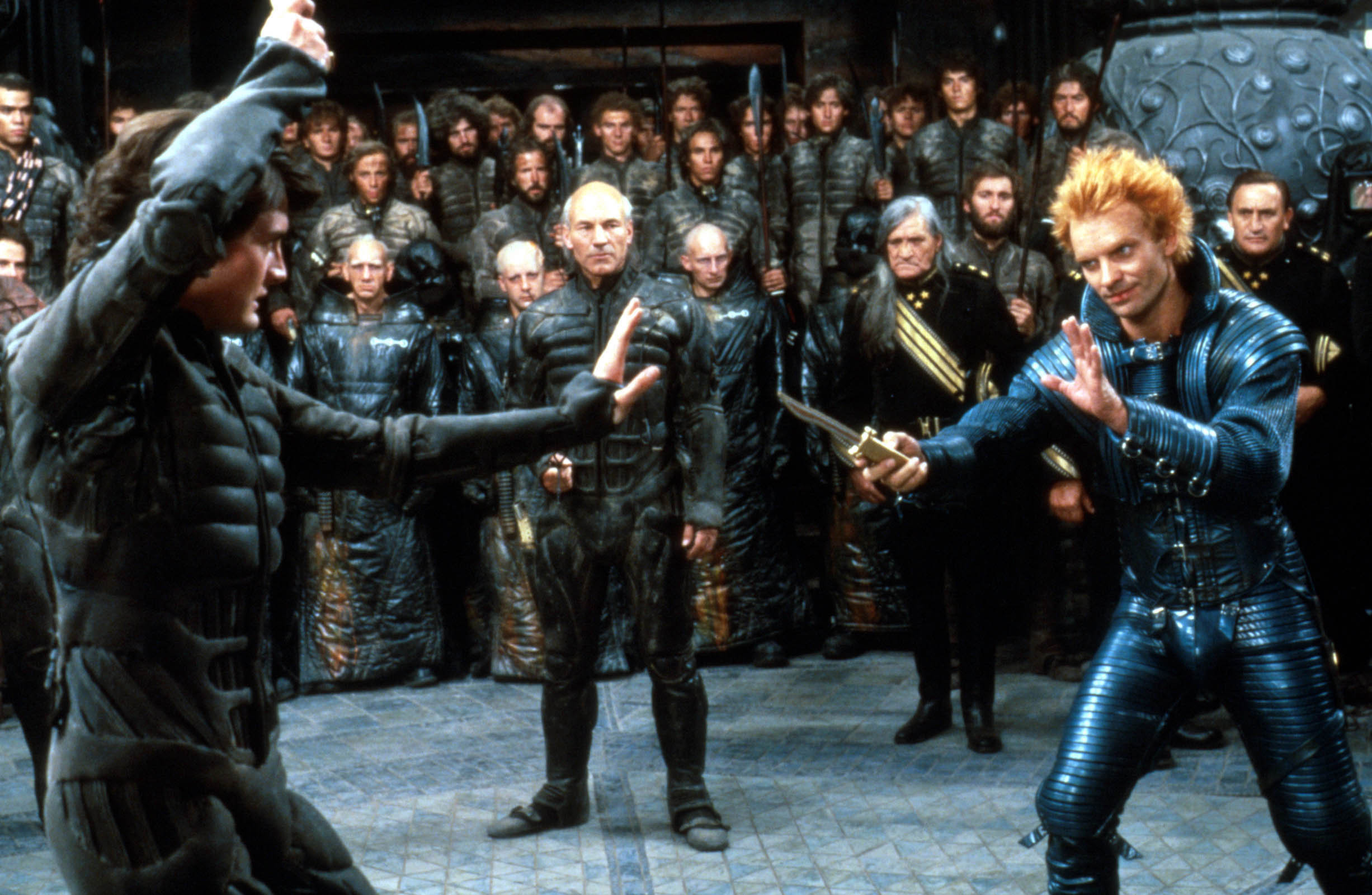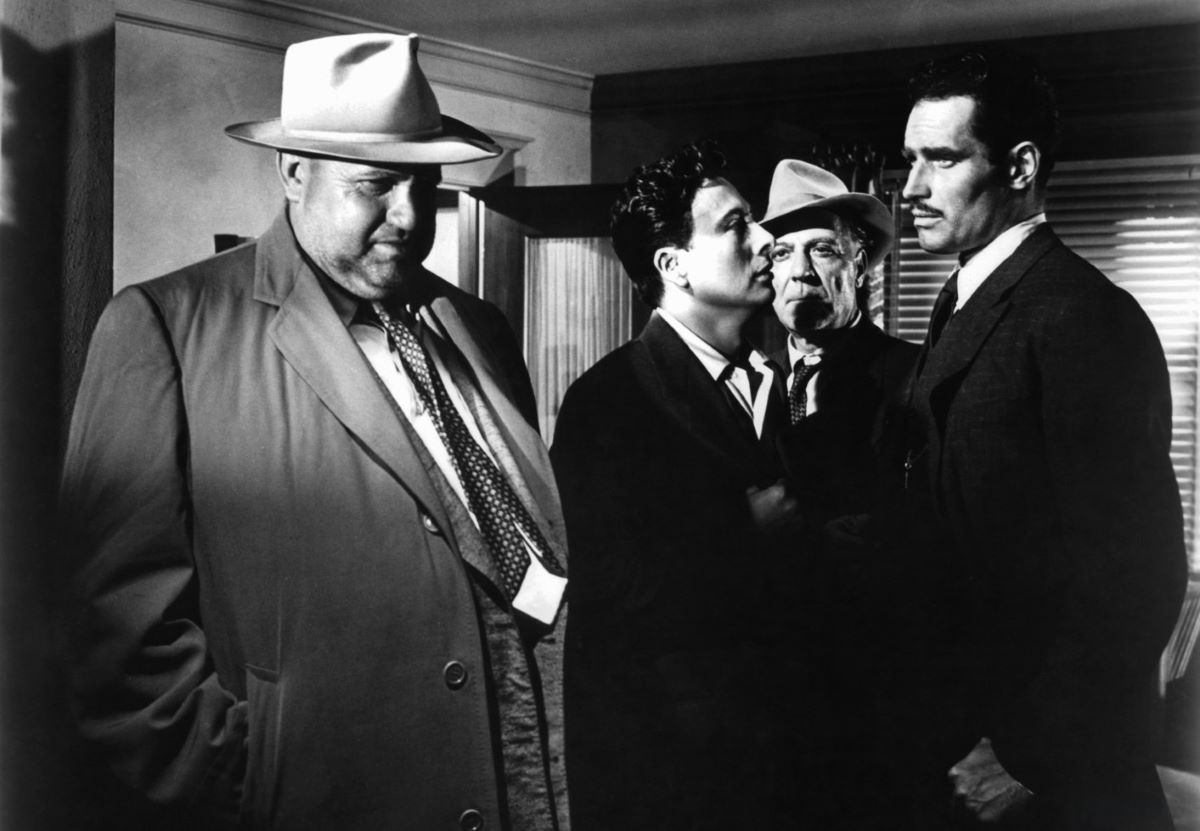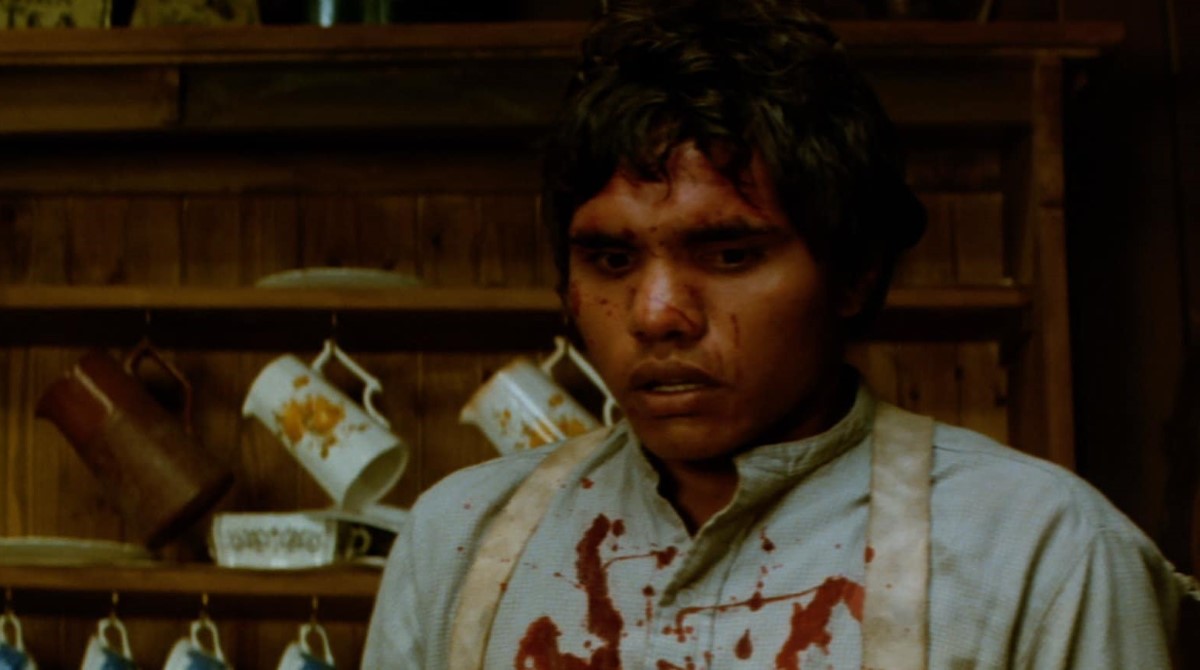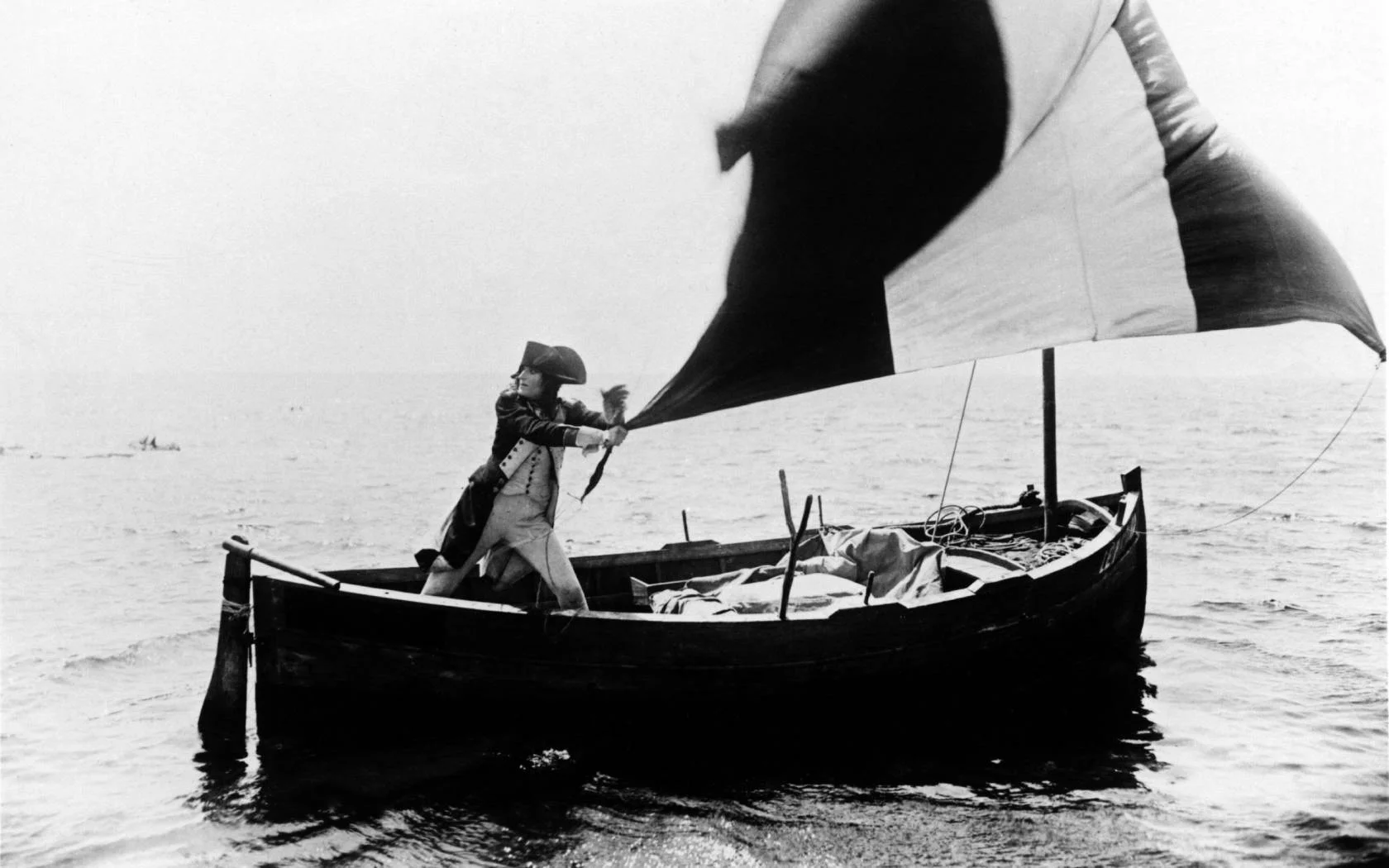In her review of the 1984 adaptation of Frank Herbert’s Dune, directed by David Lynch, Pauline Kael explores the challenging intersection of Lynch’s distinctive directorial style with Herbert’s expansive sci-fi universe. Through the lens of “David and Goliath,” Kael characterizes Lynch as the daring “David” facing the monumental “Goliath” of translating the complex, layered world of Dune to the big screen. She appreciates Lynch’s fascination with the grotesque and his capacity to immerse audiences in his unique visions but argues that his signature approach is ultimately subdued by the narrative and thematic enormity of Herbert’s work. The review highlights the film’s struggle with pacing, its fidelity to the dense source material, and Lynch’s attempts to inject his idiosyncratic sensibilities into Herbert’s meticulously constructed universe. Despite instances of visual ingenuity and dark humor that align with Lynch’s filmmaking ethos, Kael suggests that Dune remains more a solemn homage to Herbert’s vision than a true Lynchian interpretation, marked by a certain solemnity and a lack of the director’s customary depth and freshness.
* * *
David and Goliath
by Pauline Kael
The David is David Lynch, who made Eraserhead and The Elephant Man and is a painter-director of feelings and moods, of dreams, hallucinations, textures. He’s entranced by the interactions between the organic and the mechanical—by corrosion and rot. He likes to have strange things growing—things like polyps. Lynch is awestruck by what is generally considered disgusting; he’s hypnotized by it. He shows you what he sees, and you find yourself looking at things that you normally couldn’t bear and tuning in to his hypnotic state. You’re caught not just by images but by silences and discombobulating sounds and editing rhythms that give you the dreamy willies. The Goliath is Dune, Frank Herbert’s ecological sci-fi fantasy, with its own galactic system, hordes of characters parcelled out over four planets, and a Messiah—Paul Atreides, who is pre-ordained to lead the righteous in a holy war and deliver this make-believe universe from darkness and evil. The stories that make up the first Dune book were written on the West Coast, printed in installments in the magazine Analog, starting in 1963, and then put in hardcover in 1965, and the book and its sequels have together sold something like fifteen million copies and are now going stronger than ever. Those are intimidating figures, and the book’s reputation as a sci-fi masterpiece is intimidating, too.
Herbert fantasized about man’s changes in consciousness, and about the battle over consciousness-altering drugs. The conspiracies and power struggles of the ruling families of the four planets are centered on the narcotic spice that is mined on the arid planet Arrakis, which means “dune” in the language of the natives—the Fremen. The spice gives people special powers—it raises consciousness, turns the whites of the Fremen’s eyes blue, makes space travel possible, and prolongs life—but it’s also addictive, and if it’s used to excess it causes mutations. It holds this universe together, and Lynch brings on the giant man-eating sandworms that live beneath the desert on Dune and grow to be more than a thousand feet long. “The worm is the spice,” we are told, “and the spice is the worm”—they are the same creature in different stages of its life. Undulating under the sand, these killer worms—they’re as long as skyscrapers are tall—thrash up reddish and ochre dust, and when they come near the surface they zap the air with streaks of static electricity. They put on quite a show, though they’re not as squishy as you might hope they’d be in a David Lynch movie.
It doesn’t take long to realize that basically this isn’t a David Lynch movie—it’s Dune. Lynch doesn’t bring a fresh conception to the material; he doesn’t make the story his own. Rather, he tries to apply his talents to Herbert’s conception. He doesn’t conquer this Goliath—he submits to it, as if he thought there was something to be learned from it. He’s being a good boy, a diligent director. And though Herbert’s prose can prostrate a reader—it’s dry, with gusts of stale poetry—Lynch treats the book so respectfully that he comes out with a solemn big-budget version of Up in Smoke.
The movie opens in the year 10,191, and the first half hour is practically an orientation course. Lynch has so much to do laying out the basic elements of Herbert’s vision and setting the interplanetary treachery in motion that he doesn’t get around to clarifying what the narcotic means to this galaxy, or to gripping the audience, either. The exposition doesn’t seem to point the way to anything; the story isn’t dramatized—it’s merely acted out (and hurried through), in a series of scenes that are like illustrations. And several of the principal actors—those playing the Atreides family, especially—are like walking, talking pictures in a book of legends. Luckily, others (mostly in minor roles) are blissfully warped, so that we do a double take at our first sight of them, and even if they’re knocked off disappointingly fast—in some cases they go right from an introduction scene to a death scene—they make their presence felt. Herbert’s grandiose vision plays into only a few of Lynch’s strengths, yet it’s these strengths (rather than the fidelity to Herbert) that keep giving you something to look forward to. And, surprisingly, Lynch’s best work here is almost all in comedy.
Lynch is at his neo-Dickensian ease when he presents the addicts: the fat and fey, red-haired Baron Harkonnen (Kenneth McMillan) and his red-haired nephews (Sting, of the rock trio The Police, and Paul L. Smith, who was Bluto in Popeye and the brutal chief guard in Midnight Express). The Harkonnen family, rulers of Giedi Prime—an ugly planet of oil and factories and industrialization (and one that seems to be devoid of women)—have been in charge of spice production on Dune, and perhaps they have overindulged. They seem to be mutating into something like overgrown Katzenjammer Kids. They’re manic and giggly and mean. Kenneth McMillan’s wild, grinning Baron is so spiced up that he normally floats in the air about eighteen inches off the floor. When he’s excited, he goes much higher. (Padded out to weigh maybe four hundred and fifty pounds, and with a belly like a beer keg, he’s the biggest Peter Pan ever.) McMillan’s slobby Baron is certainly the villain of the year: his face is a mass of festering, suppurating boils, which his doctor (Leonardo Cimino), who’s as mad as he is, treats with such adoring care that you’re not really sure if he’s lancing them or tending them like a gardener and trying to make them blossom. The Baron’s sadistic pleasures and games can be guessed at when you catch glimpses of his retainers—their mouths and ears are stitched closed. You don’t have to guess when you see him go gleefully high up in the air and then plunk down on a young boy. You don’t recoil, though. Everything to do with the Baron is a marvel; that includes the plugs in his body, and his garments—he’s trussed up in straps that look like gigantic soiled Band-Aids. And he always seems to be having an uproarious good time. His nephews love him for the spectacle: he’s obscenely funny—a comic-strip Nero. (And Nero didn’t levitate.)
You don’t recoil, either, when Lynch presents you with a spice-produced mutant—a Third-Stage Guild Navigator, it’s called—that some generations back was human. It looks like an enlarged brain, with a fish mouth and elephant eyes; it’s all pinkish innards, and it floats in a tank of spice gas like an octopus in an aquarium. This huge tank is carried into the gold throne room of the Emperor of the Galaxy (Jose Ferrer), whose home world is the planet Kaitain. The tank is set down on the green jade floor, and the monster talks to the Emperor. It does more than that: speaking for its Guild, it gives the Emperor orders. And the power-broker Emperor, who appreciates his dignified golden splendor—he’s even blessed with a lovely golden-haired daughter (Virginia Madsen)—and is dependent on the Guild, which controls all interplanetary travel, is happy to oblige.
These orders set the plot in creaky motion. The Guild, which has secret plans to rule the universe, wants Paul Atreides killed. The Emperor sets a trap for Paul’s father, who is Duke Leto Atreides (Jürgen Prochnow), the ruler of Caladan, and lives high up in a wood-panelled castle on his Earthlike planet of forests and water. In order to separate the Atreides family from its loyal subjects, the Emperor offers the Duke the biggestplum he can: the Duke is to move his family and staff to Dune and take control of the spice mining. As soon as the Duke arrives on Dune and is isolated and helpless, the red Baron attacks, slaughters him, and sends the Duke’s concubine, the Lady Jessica (Francesca Annis), and their fifteen-year-old son, Paul (Kyle MacLachlan), out to die in the desert as worm fodder. And it’s there in the desert that Paul grows into a mystical warrior-leader. Of course, in this feudal future all these rulers have their entourages of associates, attendants, spies, and betrayers, and there’s much planet-hopping between the Emperor’s gold throne room on Kaitain, the wooden Atreides castle on Caladan, the repulsive home site of the slob Baron on Giedi Prime (with its strident, psychedelic green walls, it’s like an industrial prison or a public urinal), and the fortress cut into the rock which is the seat of the repressive government of Dune.
Lynch and his designing crew have done a fairly amazing job of simulating the different ecologies of the planets—their building materials and architectural styles and furnishings. And the cinematographer, Freddie Francis, lights the various sets and locations to bring out the different color values and, in some scenes, the quality of the air. The visual textures are glorious, and the golds and greens work on you. Nothing looks new, or right from the manufacturer; Lynch likes things aged, weathered—he likes decay. (And he likes dissolves—which are a metaphor of decay.) The people are dressed in styles that echo many different old cultures—among them Renaissance Venetian, Victorian, and (for the Harkonnens) punk—and this could be witty if only there were a hint of tackiness about the clothes. But they’re so elegant that there’s nothing to laugh at. Tackiness, though—and the wrong kind—is always present in the insistent, droning score, by Toto, with contributions by Marty Paich, Brian Eno, and others. And, despite the care that has gone into the staging, the editing rhythms are limp and choppy, and the narrative loiters on dull scenes and then rushes past the climactic ones.
The script, which Lynch wrote, has the kind of functional dialogue that pulls an epic movie down; you feel a thud when the teen-age Paul, still in his happy castle life on Caladan, reflects out loud, “Things have been so serious here lately.” And at the time the handsome, resolute Paul and his beautiful, stiff-backed mother were first dumped on the desert, there were moments when I longed for the sight of a dreaded worm. Lynch seems lacking in vulgar show-biz talents; he doesn’t ever get his heroic characters to lighten up. Francesca Annis’s Lady Jessica is alarmingly stately, and even the miraculously gifted Sian Phillips—who, with her head shaved and almost no eyebrows, plays a sorcerer like Reverend Mother—seems a shade monotonous here.
If you ask what makes the bland Paul more fit to lead the native tribes of Dune in their rebellion against Harkonnen rule than the robust native leader (Everett McGill), the only possible answer is that the prophecy stipulated that it was to be Paul. He has less personality than anyone else in the movie—except, maybe, his father, the Duke, and his true love, Chani (Sean Young). He’s just a polite, indomitable storybook hero. And when Sting, as the most agile of the Harkonnens, comes out of a steam bath stretching like a cat and just stands there half naked, displaying himself—all arrogance and spiky aplomb—he’s spellbinding in a way that makes you wish David Lynch could cut Dune loose from its “ordained” plot. Trying to be faithful to Frank Herbert’s woozy mythology, Lynch presents a singularly ambiguous and unappetizing Messiah story. I don’t know how we’re supposed to take this hero-savior Paul, who speaks the word of God but is also very quick to make a virtue of expediency when he decides to marry the Emperor’s blond daughter and keep his true love as a concubine. And I don’t know how we’re supposed to react to his leading the Fremen warriors, with their blue, blue eyes, to domination of the whole Empire. The cry of these highly disciplined troops is “Long live the fighters!” There’s nothing in the tone of the film to suggest an attitude toward any of this.
Lynch himself appears in a straight-arrow role as the engineer at the controls in the spice mine. Too bad that he’s also such a straight arrow as a director here. The movie is most otherworldly when he does something Lynchlike—something marginal or unexplained. It’s otherworldly, too, when the creepy, precocious eight-year-old Alicia Roanne Witt, as Paul’s little sister Alia—a miniature sorcererlike Reverend Mother—pricks the swollen, leering Baron with a poisoned needle and pulls a plug in his chest, and he hits the ceiling. Or when Brad Dourif (he’s the Harkonnens’ human computer) smiles to himself like a new Dwight Frye eager to pop a spider in his mouth. Or when Linda Hunt, who’s the housekeeper of the fortress on Dune—and the most imposing housekeeper since Cloris Leachman in Mel Brooks’ Young Frankenstein—speaks, in her firm you-will-hear-what-I’m-saying tones. What a voice she has, and what a sense of comic authority! If she declared herself the rightful heir to the Emperor’s throne, the audience would go wild cheering for her.
The New Yorker, December 24, 1984






1 thought on “Dune (1984) | Review by Pauline Kael”
Post Kael’s reviews of the Twilight Zone movie, Moscow on the Hudson and Conrack please.